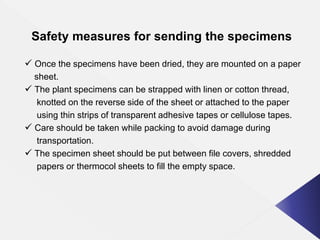In the realms of biology, botany, and entomology, the meticulous practice of sending and sharing specimens has become increasingly paramount. Whether it’s a rare plant, meticulously preserved insects, or geological samples, the safe transport of these items is crucial to preserve their integrity for scientific study. A well-choreographed process ensures that vital information remains intact, contributing significantly to research and documentation. What follows is an exploration of the references, methodologies, and best practices for safely dispatching biological specimens.
Understanding Specimen Types
Before delving into the complexities of safe transport, it is essential to categorize the types of specimens typically shared. These can range from botanical items like pressed plants, to zoological samples such as skeletons or insects in resin. Each type of specimen requires distinct handling, preservation techniques, and packaging methods to maintain their condition and viability during transit.
Packaging: A Crucial Step
Packaging serves as the first line of defense against physical damage and environmental factors. It is vital to choose materials that not only cushion but also preserve the specimen’s integrity. For instance, when shipping fragile structures like pressed flowers, utilizing acid-free tissue paper to interleave between specimens can prevent abrasion and discoloration. Furthermore, placing specimens in sturdy boxes lined with cushioning materials, such as bubble wrap or foam padding, mitigates the risk of breakage and ensures a snug fit that resists jostling during transit.
Pre-Packing Preparations
Before sealing a package, it is beneficial to conduct a thorough inspection of the specimens. This includes verifying that the specimens are adequately dried (in the case of plants) or preserved (for zoological specimens). Biological materials can be susceptible to decay; hence, utilizing preservatives or desiccants adds another layer of protection. In living specimens, ensuring an optimal microenvironment is critical, which may involve specialized containers that maintain appropriate levels of humidity and temperature during transit.
Labeling and Documentation
Labeling is not merely a cursory step; it is a vital component that adds context and traceability to the specimens. Each specimen should be accompanied by a label containing pertinent information, including scientific name, collection date, collector’s name, and any other relevant details that facilitate its identification. Furthermore, providing additional documentation, such as a shipping manifest and permits for particularly sensitive specimens, is necessary for compliance with legal and regulatory frameworks, ensuring that the specimens are handled by customs and recipient entities without incident.
Choosing the Right Courier Services
The selection of a courier service may seem trivial, yet it has far-reaching implications for the security and condition of the specimens. It is advisable to opt for specialized courier services that cater specifically to biological specimens. These services understand the nuances of temperature control, handling protocols, and the urgency often required in specimen transport. Often, a specialized courier will provide real-time tracking and can ensure the package is managed through temperature-controlled environments, minimizing the risks associated with temperature fluctuations during transit.
International Shipping Considerations
When sending specimens across borders, the intricacies multiply. International shipping often involves stringent regulations and requires compliance with both sending and receiving countries’ customs laws. Before initiating the shipment, familiarize yourself with the import/export regulations applicable to the specimen type. In some cases, permits may be needed, especially for protected species or materials collected from controlled environments. Engaging with local authorities or institutional compliance offices may yield insights into mitigating legal hurdles and ensuring a seamless shipping process.
Communication with Recipients
Establishing open channels of communication with the recipient institution or individual is paramount throughout the shipping process. Prior to dispatch, discussing the arrival time and expected handling procedures can help prevent misunderstandings and ensure that the specimens are attended to promptly upon arrival. A detailed break down of the package’s contents and any specific handling instructions should be conveyed to facilitate appropriate care as soon as the package is received.
Conclusion: The Impact of Proper Practices
The safety of specimen transport extends beyond mere logistics; it encompasses the very heart of scientific inquiry and ecological stewardship. Properly managed specimen transportation maintains the quality of scientific materials that inform research and education. By implementing best practices encompassing careful packaging, diligent documentation, appropriate courier selection, and proactive communication, the academic community can foster an environment where knowledge thrives. Each specimen, dispatched with precision and care, helps weave the fabric of biodiversity research, contributing to the greater understanding of our world.









Leave a Comment